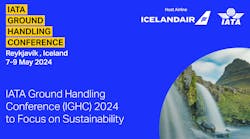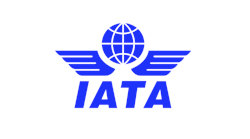Evans coolant clarification
In the March Issue of AMT Magazine I wrote an article about some service bulletins issued by the European Aviation Safety Agency (EASA), the FAA, and the Evans Waterless Engine Coolants Company. These bulletins addressed the use of Evans NPG+ waterless coolant as a solution to an overheating problem with the Rotax 912 and 914 Series engines.
This article generated some interesting responses and many technical questions that I could not address. It appears that engine cooling or overheating in the Rotax engines is influenced by engine series, cowling configuration, aircraft location, and coolant type. The antidotal data presented by readers suggest that this overheating problem is a technical challenge that may not be solved by simply using a specific coolant type. I strongly recommend that if you are experiencing overheating problems with your Rotax engines that you contact Tech Services for the aircraft and engine OEMs for advice and to get the latest data. It appears that they are currently addressing this ongoing challenge.
For example, see the service bulletin issued by Diamond Aircraft Co. SB No. DA20-72-03L, Rev. 2 Date Issued: July 23, 2009, Title: Use of 50/50 Glycol Coolant Types to Comply with EASA AD No. 2007-0155 Page: 1. This SB provides an alternate replacement for the Evans NPG+ waterless coolant with a 50/50 glycol type coolant as stipulated in EASA AD No. 2007-0155. (See latest revision of ROTAX SI-912-016 for approved glycol coolants). This SB shall be used concurrently with the latest revision of ROTAX SB-912-043. As for the issuing regulatory agencies, they have provisions for your comments and feedback. Again thank you for your responses to the March article.
— Charles Chandler
When the maintenance manual is wrong
I read with interest Goglia’s article on maintenance manual inaccuracies. I take exception however to his assertion that mechanics are negligent in getting these things fixed. I had to think back on the number of times I have tried to get bad information corrected. I was able to come up with three times in just the past five years, all with no success from the OEMs, including two times of which I involved the FAA. So it was with a degree of skepticism and amusement that I read this article. I have gotten to the point in my career that I find these exercises to be one of futility and frustration. I’m sure we all have our collection of war stories but I find it particularly galling that not all segments of the industry are held to the same standard.
— Raymond S. Benischeck, Chief Inspector
I have been reading AMT for quite a few years now and find the stories well written, informative, and I always learn something from them. That’s why I am writing you now. When I read the story Goglia wrote in the May 2010 issue, I think he dropped the ball a few times. When I found problems with maintenance manuals or other information that had to be changed, I always went directly to my crew chief and supervisor with copies of the incorrect manual references and the fix to make the manual correct. If they didn’t get changed I would take it upon myself and take it to the proper channels. Also, the bottom line is improper maintenance manual information or not, when you install, adjust, repair anything that moves, pumps, generates, broadcasts, etc. you always do an operational and leak check. His story never mentioned anything about the operational checks.
— Ray Gardner, A&P IA Retired
The next generation
From where does the onus come from to encourage young people to enter the aviation career? As a 20+ year mechanic/inspector/145 DOM/135 DOM, I’m finding it more and more difficult to find the motivation to encourage the younger generation to enter the aviation experience. The article really didn’t make it clear why we should get involved in getting the generation behind us to pursue aviation other than “it’s the right thing to do” motivation. Why would it be the right thing to do?
Thanks for the article!
— Todd
The “impending shortage” of aviation technicians is a rumor that has existed for longer than the technicians coming into the field today have been alive. It was a well worn rumor when I received my A&P ticket in 1980. However, it may be a rumor that will come to pass in the not too distant future, and the blame for the shortage of qualified personnel will lay in large part with our own industry. As you stated, the need for maintenance technicians will increase due in part to the increase in air travel. Unfortunately our industry has been woefully shortsighted in its efforts to replace the technicians who will be leaving the industry. I disagree with your statement that it is our responsibility as active technicians to promote and encourage new people to join our ranks in the aviation industry. It is the responsibility of the aviation industry as a whole to provide fair compensation and relief from unreasonable liabilities if we are to attract the caliber of people required to provide services.
— Daniel Ingram
Let us know what you’re thinking. Send letters to [email protected].




